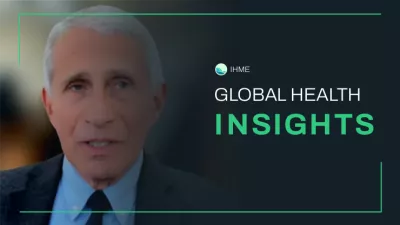Health financing
Our health financing work examines health spending from governments, individuals, private insurance, and development assistance for health (DAH), answering critical questions about where resources for health are coming from and where they are going to inform policymakers.
Key findings
Estimates from our latest report, Financing Global Health 2021: Global Health Priorities in a Time of Change, and most recent capstone paper show that global health spending is at an all-time high.
The COVID-19 pandemic initiated an unprecedented growth of resources targeted toward global health activities.
Development assistance for health grew by 44% between 2019 and 2020, in large part due to additional funding to fight COVID-19.
However, there are many health focus areas that require more funding, like reproductive, maternal, newborn, and child health, which saw a 2.3% decline in funding between 2019 and 2021.
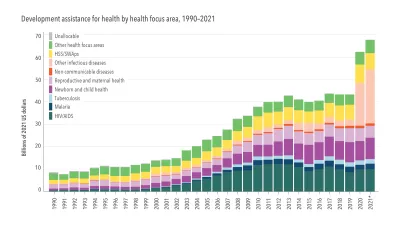
Pandemic preparedness requires greater investment.
The G20 High Level Independent Panel recommends an additional $15 billion toward pandemic preparedness in the next 5 years. Our projections show that only 12% of low- and middle-income countries will meet the recommended spending target for national governments.
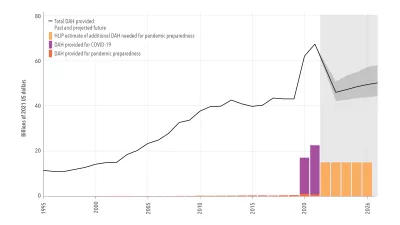
Major portions of development assistance for the health response for COVID-19 came from 3 countries.
The US, Japan, and Germany disbursed a combined total of $8.5 billion toward fighting COVID-19 in 2021, primarily for vaccine procurement and coordination.
Donor funding for COVID-19 has not always aligned with regions where the virus has been the most debilitating. While sub-Saharan Africa received 33.6% of funds, only 13.5% of COVID deaths occurred in this region. In contrast, South Asia had 27.2% of the world’s COVID deaths and received only 14.8% of the funds.
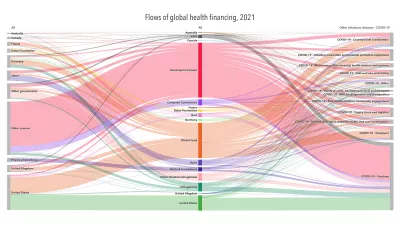
Explore patterns of global health financing flows from 1990 to 2050.
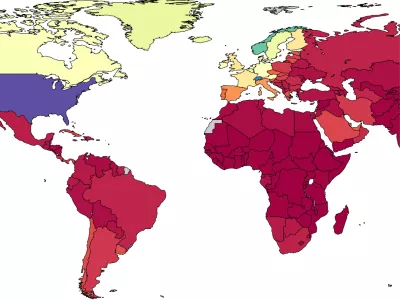
What’s new in Financing Global Health 2021?
For over a decade, the Financing Global Health (FGH) report has provided policymakers with critical information on current and future health financing and spending. Our most recent edition, Financing Global Health 2021, expands on, and adds new estimates to, topics like pandemic preparedness, future health spending, and development assistance for health.
- Estimates of pandemic preparedness and response (PPR) spending. We present retrospective estimates of DAH for PPR from 1990 to 2021.
We also look ahead at the next five years – to 2026 – and forecast the availability of DAH as it relates to the need estimates published by the G20’s High Level Independent Panel on pandemic preparedness. - Revised future health spending projections to 2050
We have updated our projections of future health spending for 204 countries to 2050, assuming historical spending patterns and relationships persist. We observe that the wide disparities in health spending between low- and high-income countries are expected to persist into the future. - Updated disease spending profiles
Initially introduced in 2019, the profiles allow stakeholders to easily access information on a number of health focus areas. This year’s profiles highlight the continued support for the health-related pandemic response as well as growth and declines in support for some health focus areas.
